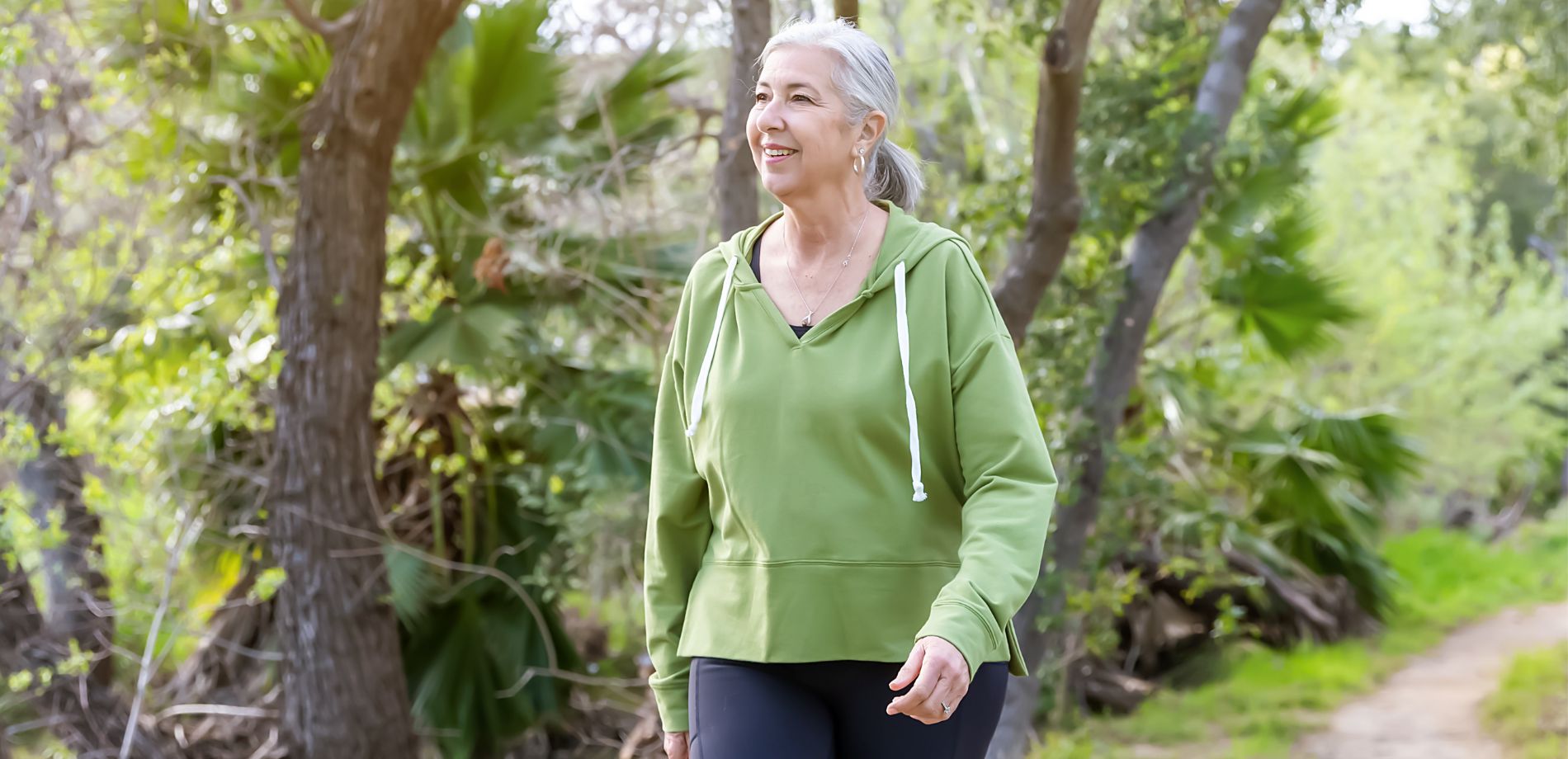Contributed by: Andrea Mayer, Physical Therapist
It’s finally spring! If your resolutions to get fit have lost their oomph, we have a suggestion to get them moving again: Get out there and go for a walk! Sounds simple, but it’s powerful. Walking offers tons of benefits for body and mind.
Walking may not be the trendiest form of exercise, but it’s suitable for just about anyone. Plus, this aerobic activity boosts cardiovascular health, burns calories and is an ideal mental health break. It’s also a great way to sit less and move more.
The Benefits of Walking
To get the biggest bang for your walking buck, experts say to aim for at least 150 minutes of moderate intensity activity each week. Brisk walking —walking at a pace of 2.5 miles per hour — counts as a moderate intensity workout.
According to the American Heart Association, a moderately intense walking program can:
- Improve your blood pressure, blood sugar and cholesterol levels.
- Help you lose weight and manage weight-related health problems.
- Lower your risk of serious health problems. This includes stroke, heart disease, type 2 diabetes, and several types of cancer.
- Lower the risk of some pregnancy complications.
- Help you sleep better. This includes improving insomnia and obstructive sleep apnea.
- Improve brain health, including thinking, focus and memory. It can also lower your risk of dementia and Alzheimer’s.
- Improve symptoms of anxiety and depression.
- Improve balance. This can help you reduce your risk of injury from falls as you get older.
- Improve bone health.
- Boost your quality of life and overall sense of well-being.
How to Get Started
You don’t have to do 150 minutes all at once. In fact, you shouldn’t, especially if you haven’t worked out in some time. Here’s how to get the most out of a walking routine:
- Check with your doctor first. It’s always a good idea to make sure you don’t have any health issues that can keep you from doing brisk walking safely.
- Spread out your workout. For example, you can walk 30 minutes a day, five days a week.
- Add some weight. For optimal health, at least twice a week, add muscle-strengthening activity to your physical activity. You can do this separately or combine it with walking by adding some small hand weights.
- Walk with a friend. If you struggle getting your walking in, get a pal to walk with you. This keeps you both accountable. You can also join a walking club to make it a social event. Bonus: Social connection also helps improve physical and mental health.
If you’re ready to take the next step with your walking routine, check out the Cleveland Metroparks Trail Challenge or register to walk in the MetroHealth Resiliency Run on June 7, 2025.











